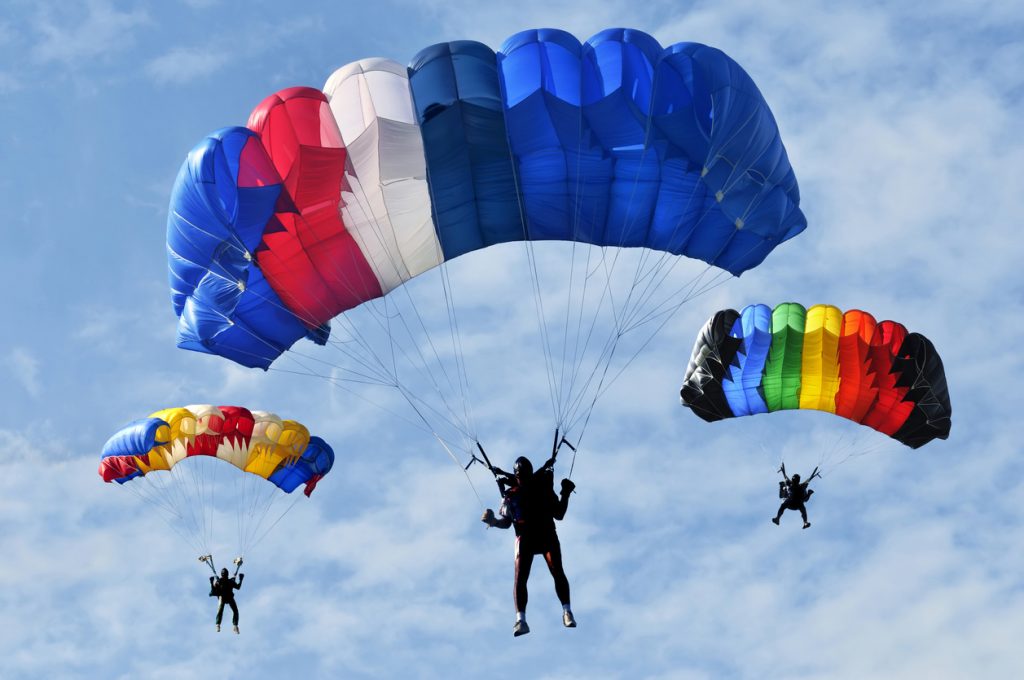The Charity
Aviation
Maritime
GA1392 (S&P)
Initial Report
A recently licensed and relatively low experience skydiver reported that during a parachute jump, they initiated deployment at 4000 ft agl. Their canopy was large, rectangular and damage free but there was a tension knot in the rear cascade lines and their canopy was in a spiral dive equivalent to pulling one brake line all the way down. They were able to counter the rotation by use of a rear riser but assessed their parachute as “not safe for a landing”. They initiated the standard emergency procedure, which is to cutaway (jettison by pulling a handle) their malfunctioned main parachute and deploy the reserve parachute.
They had a safe landing without further incident. They do not know what altitude they were at after deployment or at cutaway. They did not report whether they had checked for a spontaneous brake release (brake fire). Subsequently, other people have remarked that “a deep input and release to both brake toggles may have cleared the tension knots and prevented the need for reserve”. The reporter observed that at this level of experience, they had only received basic emergency training; they had not for example received training in how to clear tension knots. They also recognised that informal advice from peers comes with risks of misinformation or incomplete information.
Lessons learned and thoughts:
- Trained emergency procedures are the front-line action in case of malfunction and in this case led to a safe resolution.
- If no other training is received, informal comments on how to rectify a minor malfunction should be ignored.
- Perhaps training could be improved.
CHIRP Comment
First and foremost, student parachutists must follow the training provided by their instructor. The discussion that follows is specific to this reporter, who is a licensed parachutist.
The reporter is to be congratulated for promptly assessing the malfunction as ‘not landable’, taking the correct action for their experience level and executing the emergency procedures without undue delay and at what was probably a safe altitude. Although altitude awareness would ideally have been maintained, in the high-stress environment of a spiral dive malfunction this is a common omission. That same combination of time pressure and cognitive load is exactly why non-standard corrective actions can be hazardous, consuming precious altitude that may be needed for a safe cutaway.
After incidents like this, it’s common for others who weren’t in the situation to suggest that a different course of action might have worked better. Such comments, though often well-meant, can undermine confidence or lead to unsafe adjustments of established emergency drills. Under stress, even experienced individuals can experience reduced awareness and decision-making ability. Every malfunction is unique, and there’s rarely enough time to diagnose and experiment with potential fixes. The value of a simple, practised emergency procedure is that it removes the need for complex analysis when seconds matter most.
As experience grows, jumpers may wish to discuss more advanced techniques with appropriately qualified instructors or canopy coaches. These conversations should always be structured and tailored to the individual’s experience, recency and equipment. Many drop zones run annual safety days and suspended harness drills that give opportunities to explore complex scenarios safely under supervision.
CHIRP thanks the reporter for sharing this experience and for prompting valuable reflection on how emergency training evolves with experience. More detailed discussion and guidance on this topic can be found in our Hot Topic feature – Skydiving Special 2.

Key Issues relating to this report
Human Factors Considerations
The following ‘Dirty Dozen’ and other Human Factors were central to CHIRP’s discussions about this report and are intended to provide food for thought when considering aspects that might be pertinent in similar circumstances.
- Stress – reduced cognitive performance and awareness under high workload and time pressure.
- Pressure & Peer Influence – pressure to accept or act on informal, unverified advice.
- Skills & Knowledge – understanding current training limits and knowing when to seek qualified guidance.
- Situational Awareness – maintaining altitude and time awareness during abnormal events.
- Decisiveness – taking appropriate and timely action.
- Safety Mindset – open reflection and sharing of experience to support wider learning and training improvement.